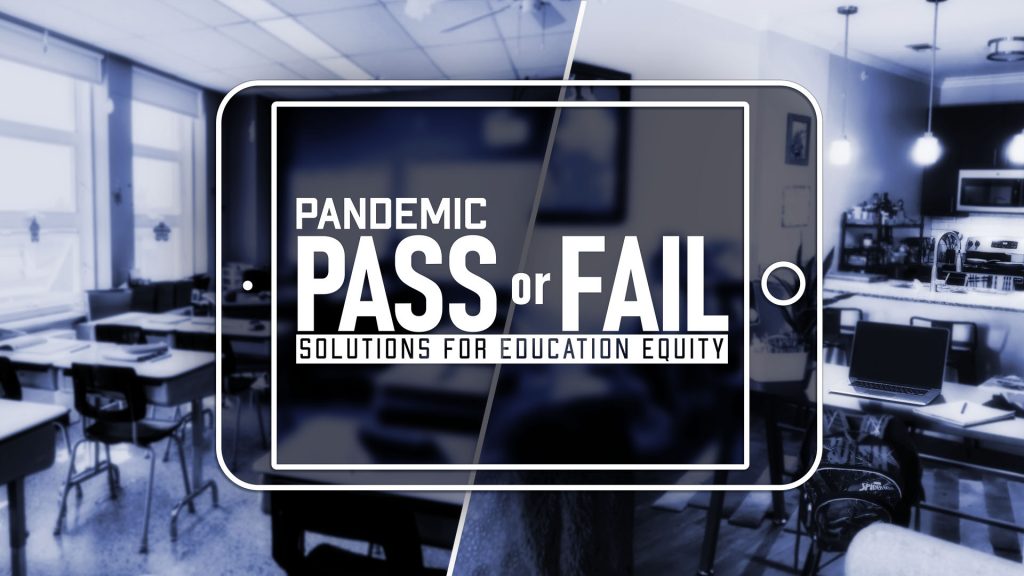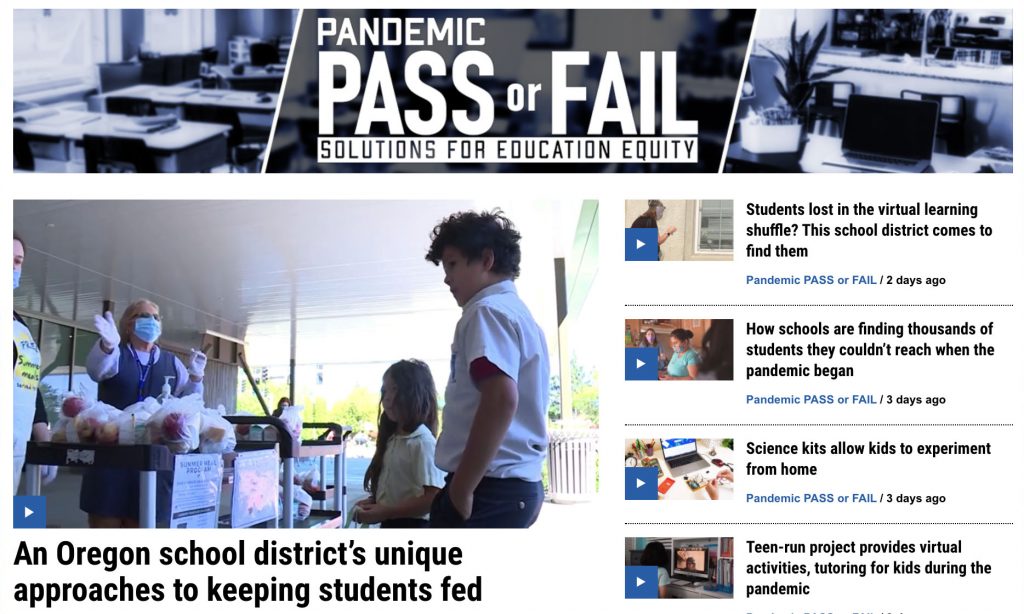
“It was a pivot, it was a COVID pivot.” Last spring, Carolyn Robinson, a regional director at the nonprofit Solutions Journalism Network, needed a solution herself. She had set up 15 workshops to train local TV newsrooms around the country in “solutions journalism,” an increasingly influential approach that brings rigorous reporting to bear on solutions to social problems. But Robinson’s well-laid and well-funded plans became an early coronavirus casualty.
So Robinson “pivoted” to a proven partner, Nexstar’s KXAN-TV in Austin TX, which had success last year with a solutions journalism series called Save Our Students, on improving mental health programs in schools. (You can read our report about it here.) The result: an ambitious new project that draws on broad collaboration and tight coordination to create a compelling experiment in enterprise and beat reporting.

The new project, which launched Monday, is called Pandemic: Pass or Fail, and it focuses on solutions for education inequities brought to light by the COVID-19 crisis. Josh Hinkle, who runs investigations and innovation at KXAN, is the man behind the curtain, leading a consortium of 15 Nexstar stations (with more to come) that are creating stories to be shared across the whole group.
“These are really good stations that have some great investigative teams and really strong journalists,” says Hinkle. “With any big project like this, the leadership really has to be behind it. And all of the news directors from these stations were very, very much on board once they understood what the project was.”

Hinkle got some corporate help in recruiting the other stations, but after that, KXAN ran the show. “I’m kind of the keeper of all the stories,” says Hinkle. “So I’m working with all of the different stations and their reporting teams to figure out, ‘How does your story fit into this project?’” This week’s launch features 17 stories produced by KXAN and six other partners, all available at once for any of 114 Nexstar stations to use at their own discretion. Eight more stations have signed on to the project. (You can explore the current list of stories here.)
KXAN plans to air all the stories, as well as an hour-long special next month. Even though the other partners are free to do whatever they like, “we imagine that most of the participating stations will air the bulk of them in their newscasts as well,” says Hinkle. “The topic is applicable [everywhere], and their viewers by that point will have seen the marketing around this and understand that this is a project that that station is doing in collaboration with a larger network of journalists across the nation.”
WATCH Catenya McHenry’s report on home learning pods for KXAN
Hinkle and his KXAN colleagues created a customizable graphics package and a set of shared digital assets, including national town hall conversations, a Facebook group, resource guides, and ways for viewers and users to submit ideas. Every station gets its own Pandemic: Pass or Fail URL to allow it to “localize” the project.

“The content will be available for any station that wants to air it at any point during the project,” says Hinkle. “You just want the project and the topic and the content that’s being generated to be shared in whatever way possible and make sure the solutions journalism idea is there, because that’s what really sets this project apart from anything I’ve ever seen a station group do.”

To hammer home that “solutions journalism idea,” Carolyn Robinson held virtual hour-long workshops this summer with all the stations as they came on board. She and her funder, the Chan Zuckerberg Initiative, also enabled KXAN to hire two freelance journalists, Laney Valian and Catenya McHenry, to work on the project. To Robinson’s delight, Hinkle and his boss, news director Chad Cross, insisted on calling the new hires “investigative solutions journalists.”
“We’re always trying to explain that we’re not this feel-good happy news,” says Robinson. “We are investigators. We are investigating how things work: how well do they work, for how long, for whom? We just move past investigating the problem to investigating the solution — and [whether it] can work in different places.”
“I really didn’t fully understand what solutions journalism was, to be honest with you,” says Adrienne Mayfield, the newly minted executive producer of investigations and special projects at Nexstar’s Norfolk VA station WAVY-TV. “It took quite a few emails and then sitting down with [KXAN] and talking to them. We’re so good at identifying the problem. But very rarely do we spend significant time on the solution. So it’s a reversal of our normal reporting,”

WAVY’s two investigative reporters, Chris Horne and Lex Gray, each provided a story for the first round of Pandemic: Pass or Fail — one on a program serving students in vulnerable communities who missed school altogether in the early months of the pandemic and fell behind, and another on pop-up outdoor Wi-Fi hotspots established by a Virginia school district with broadband access issues. “It’s not advocacy,” says Mayfield. “That’s not the right word for it, but Lex put it in a really beautiful way: ‘It’s a more optimistic way of looking at investigative journalism.’”
WATCH Lex Gray’s report on outdoor Wi-Fi hotspots for WAVY
Even if you’re not intrigued by solutions journalism, Pandemic: Pass or Fail ticks several boxes for any station interested in expanding its in-depth reporting on critical issues, not to mention its reputation for community service. To name just three: tight-knit editorial collaboration within an ownership group; partnership with a mission-driven nonprofit that can provide know-how and perhaps even resources; and extensive digital integration to enhance audience engagement and encourage user and viewer input. This strikes me as a way to bring back original beat reporting to stations that need it, but can’t do it all by themselves.
Nexstar has also shown a way for solutions journalism to scale more efficiently, leveraging a lead station like KXAN to build capacity across a whole group, even in a pandemic. You can be sure Carolyn Robinson and her colleagues will be calling on other stations and their owners to follow suit. And Robinson’s hope is that at Nexstar, solutions journalism is here to stay. “Of course, from our point of view, we want to see those stations continue with that philosophy and approach past this year and this project and into next year — and hopefully past the pandemic as well.”
For now, the Nexstar stations are cranking out stories for rounds two and three of the pandemic project. “I’m already hearing pitches from them saying, ‘Hey, we’re almost done with our first story,’” says Hinkle. “‘Can we start working on a second one for a couple of weeks down the road?’”
“I’m hopeful as we continue to produce more pieces, the execution part of it will be a little easier for us,” says WAVY’s Mayfield. “But the training was really, really valuable. Once this project is over, we can use solutions journalism as an investigative tool to tell other stories, and maybe those stories will be more beneficial to our communities than just the problems-driven stories. There’s a time and place for both.”